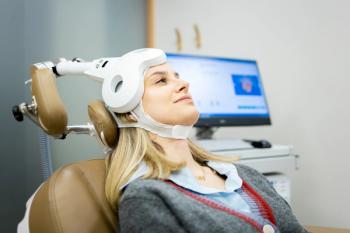
Potential MDD Biomarkers May Lead to Objective Diagnosis
A safe, noninvasive method for early detection of depression could be around the corner.
[[{"type":"media","view_mode":"media_crop","fid":"50434","attributes":{"alt":"early diagnosis of depression","class":"media-image media-image-right","id":"media_crop_470147129376","media_crop_h":"0","media_crop_image_style":"-1","media_crop_instance":"6194","media_crop_rotate":"0","media_crop_scale_h":"0","media_crop_scale_w":"0","media_crop_w":"0","media_crop_x":"0","media_crop_y":"0","style":"width: 245px; height: 163px; float: right;","title":"©AndrePopov/Shutterstock","typeof":"foaf:Image"}}]]RESEARCH UPDATE
What if expert use of biomarkers gleaned from laboratory examinations could catch an MDD diagnosis early? A
Accumulating research has demonstrated a neuroendocrinal basis for MDD that is measurable via salivary cortisol and α-amylase levels and also 18F-fluorodeoxyglucose positron emission tomography (18F-FDG PET) imaging. The neuroendocrinal axes involved are the hypothalamic-pituitary-adrenocortical (HPA) axis, responsible for cortisol production, and also the sympathetic adrenomedullary (SAM) system, for which salivary α-amylase acts as a biomarker for dysregulation.
In the
The study population was recruited from a single center, the Division of PET Center, Department of Nuclear Medicine, Huashan Hospital, Fudan University in Shanghai, China. The stringent recruitment procedures (age 50 to 60 years; no comorbidities; and no use of antidepressants, antibiotics, or other drugs that could affect the SAM system or HPA axis for 4 weeks prior to the screening) resulted in a study analysis population of only 16 subjects: 8 patients with MDD and 8 matched controls.
The combination of salivary cortisol and α-amylase analysis and 18F-FDG PET imaging could potentially be a safe, noninvasive method of early diagnosis of MDD.
Salivary cortisol levels (14.2 ± 1.5 nmol/L vs 6.3 ± 8.8 nmol/L) and salivary α-amylase levels (200.3 ± 14.5 IU/mL vs 114.5 ± 12.4 IU/mL) were significantly higher in patients with MDD than in healthy controls (P < .01 for both measures). In alignment with results reported in
The researchers noted that although findings from each test could be used as a potential biomarker for MDD, regression analysis showed that the combination of salivary cortisol and α-amylase analysis and 18F-FDG PET imaging of glucose metabolism in the superior frontal gyrus and rectal gyrus was a more reliable predictor of an MDD diagnosis than any of the tests done individually (P < .001).
It was argued that the combination of salivary cortisol and α-amylase analysis and 18F-FDG PET imaging could be a safe, noninvasive method of early diagnosis of MDD. The study had a number of limitations, though, primarily its small, single-center size. The researchers also conceded that cortisol measures would be more accurate if tested at 1-hour intervals over a 24-hour period to catch circadian and ultradian fluctuations in cortisol secretion.
Furthermore, they noted that no changes to salivary cortisol or α-amylase levels or glucose metabolism were observed when depressive symptoms were relieved, but details regarding treatment type, length, and follow-up were not provided in the report of the study. In all, this research may spur further investigation of the relationships between glucose metabolism, SAM systems, HPA axis function, and MDD-perhaps leading to new, objective diagnostic methods and new pharmacologic treatments.
References:
1. Wei K, Xue HL, Guan YH, et al.
2. Hosokawa T, Momose T, Kasai K.
Newsletter
Receive trusted psychiatric news, expert analysis, and clinical insights — subscribe today to support your practice and your patients.

















